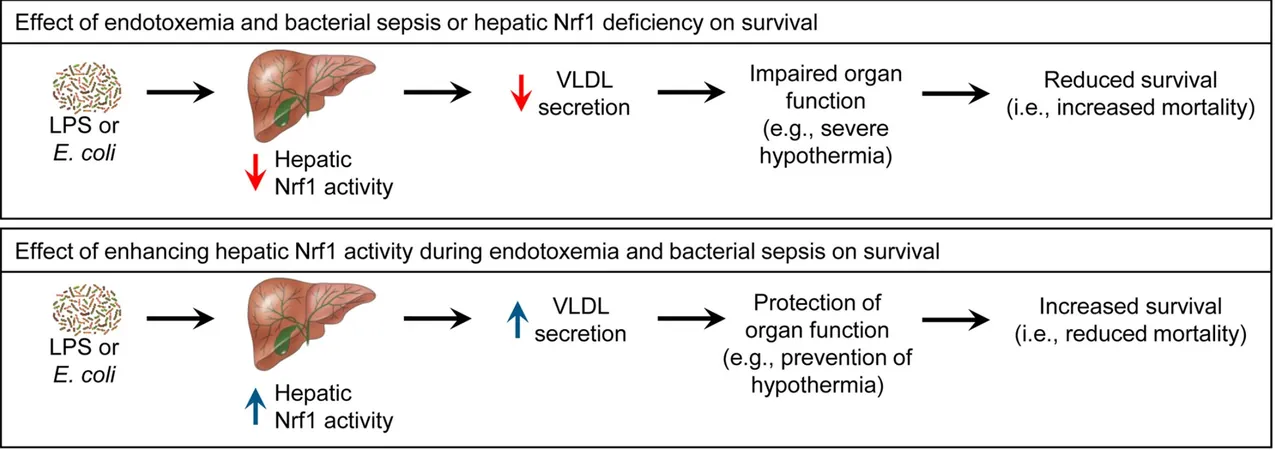
Unlocking the Secrets of Dolphin Brains: How They Use Sound to Navigate Underwater
2025-06-22
Author: Noah
Diving into the Depths of Dolphin Intelligence
In a world where sunlight barely penetrates, dolphins, like their toothed whale cousins, have evolved a remarkable adaptation: echolocation. With just a series of sharp clicks, these marine mammals navigate their dark aquatic realm, crafting a vivid picture of their surroundings solely through sound.
Echolocation Explained
Echolocation is more than just a tool for locating prey; it's a sophisticated biological sonar system. Dolphins emit high-frequency clicks that bounce off objects, allowing them to decode critical details about their environment—size, shape, distance, and even the intricacies of their targets' internal structures.
This ability is essential, particularly for species that traverse the depths where light fails to reach. For instance, deep-diving whales rely on echolocation to find food thousands of feet below the surface.
New Groundbreaking Research
A recent study led by the Woods Hole Oceanographic Institution (WHOI) sheds light on the unique brain structures of echolocating dolphins compared to non-echolocating sei whales. This research aims to uncover how these adaptations influence their sensory and motor functions.
Diving into Dolphin Brains
Obtaining brain tissue from dolphins is a challenging task, prompting researchers to collaborate with the International Fund for Animal Welfare (IFAW) to gather enough samples. Lead author Sophie Flem explained the study's goal: to investigate the differences in auditory processing pathways between the two whale species.
In dolphins, the inferior colliculus—central to all mammals—appears enlarged, serving as a hub for processing sound information.
Cerebellum's Unexpected Role
Perhaps the most surprising discovery involves the cerebellum, traditionally thought to control balance. Co-author Peter Tyack highlighted its emerging role as an integration center for sensory information, crucial for dolphins as they produce sound to interact with their environment.
Echolocation, in essence, merges hearing and vocalization, allowing dolphins to navigate their underwater world dynamically.
Advancements in Marine Mammal Research
Scanning the massive brains of whales, nearly three times the size of human brains, is no small feat. Thanks to innovative imaging techniques developed by researchers like Karla Miller and Ben Inglis, scientists have captured unprecedented clarity in studying these complex nervous systems.
Peter Cook, the senior author of the study, expressed excitement about the potential revelations from dolphin and whale brains, hinting at how their evolutionary paths may unlock further understanding of brain development across species.
Looking Ahead: Mapping Vocal Pathways
The research team is poised to delve deeper into the neural control of vocalization in dolphins, aiming to map how their unique nasal structures differ from those of baleen whales. This exploration could unveil new dimensions of how vocal learning and sound perception intertwine, illuminating one of nature's most intricate sonar systems.
The full details of the study are available in the journal PLOS One, marking a significant leap forward in our understanding of these incredible marine creatures.









 Brasil (PT)
Brasil (PT)
 Canada (EN)
Canada (EN)
 Chile (ES)
Chile (ES)
 Česko (CS)
Česko (CS)
 대한민국 (KO)
대한민국 (KO)
 España (ES)
España (ES)
 France (FR)
France (FR)
 Hong Kong (EN)
Hong Kong (EN)
 Italia (IT)
Italia (IT)
 日本 (JA)
日本 (JA)
 Magyarország (HU)
Magyarország (HU)
 Norge (NO)
Norge (NO)
 Polska (PL)
Polska (PL)
 Schweiz (DE)
Schweiz (DE)
 Singapore (EN)
Singapore (EN)
 Sverige (SV)
Sverige (SV)
 Suomi (FI)
Suomi (FI)
 Türkiye (TR)
Türkiye (TR)
 الإمارات العربية المتحدة (AR)
الإمارات العربية المتحدة (AR)